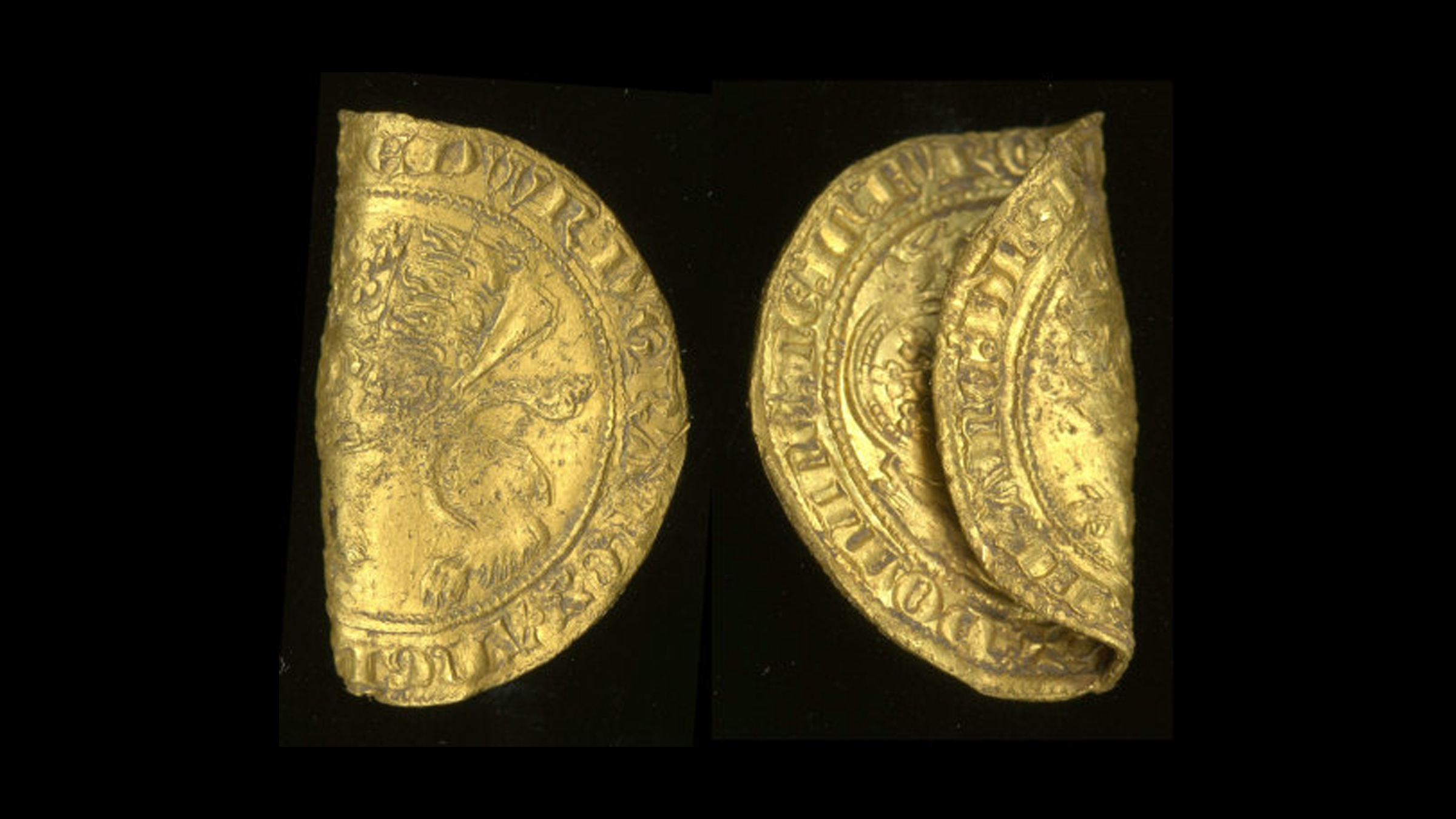Metal detectorist unearths rare gold coins from Black Death period
The hoard belonged to a wealthy person in England.

A metal detectorist in England has unearthed two rare gold coins that date to the mid-14th century, a time when Black Death was ravaging the country.
Both medieval coins depict Edward III, who tried to introduce gold coinage to England starting in 1344. One of the newfound coins — a leopard coin (also called a half florin), issued from January to July 1344 — was considered "failed" because the mint charges were too high and the value assigned to the leopard coins overvalued gold against silver, according to a June 17 statement from the Portable Antiquities Scheme (PAS).
Edward III tried to rectify these monetary problems by introducing new coins from July 1344 until 1351, when the other newfound coin was minted. This coin, called a gold noble, weighed nearly 0.3 ounces (7.7 grams), more than twice as much as the 0.12-ounce (3.5 g) leopard.
Related: 12 bizarre medieval trends
The metal detectorist found both gold coins near the town of Reepham in Norfolk County in October 2019, but PAS archaeologists have only now finished their assessments of the coins. As for how the coins ended up in the ground, archaeologists have proposed two possibilities. "It seems likely that both coins went into the ground at the same time, either as part of a purse loss or as part of a concealed hoard," according to a statement from PAS, a project managed by the British Museum in England and Amgueddfa Cymru – National Museum Wales that analyzes and preserves valuable artifacts found in the U.K.
The coins were folded in half but were otherwise in good condition, with minor scuffing that was likely caused by agricultural activity. The leopard is 23 karats, meaning it's about 96% pure gold, PAS reported. If the local coroner, an independent legal official, holds an inquest to review coins, they may qualify as "treasure," a PAS term used to describe two or more silver or gold coins from the same find that are at least 300 years old.

The discovery of the leopard is especially remarkable, given that not many of these coins were minted and "hardly any have survived," Helen Geake, a finds liaison officer for PAS, told the BBC. There are just three leopard coins in public museums today, PAS reported.
Sign up for the Live Science daily newsletter now
Get the world’s most fascinating discoveries delivered straight to your inbox.
Whoever owned the two coins was "at the top of society," Geake added. Back then, their worth was equivalent to $16,700 (12,000 British pounds) in today's money.
Following the Norman Conquest in the 11th century, the only coins used in England were silver pennies, Geake told the BBC. "Then Edward III decided to reintroduce the first gold coins in England since the Anglo-Saxon era — and no one knows why."
The new system used florins (or double leopards), leopards and helms (or half leopards). However, Edward III's new money denominations didn't catch on with the public. Maybe because "when one or two pennies were the equivalent of a day's wages … perhaps very few people used them," because their denominations were too high, Geake told the BBC.
The leopard's failure led to the creation of the noble, she noted. However, while a florin was worth 6 shillings, a leopard 3 shillings and a helm 1 shilling, 6 pence, the noble also had a high worth of 6 shillings, 8 pence, according to PAS.
The new finding shows that leopards were in circulation longer than previously thought. One possibility for the leopard's unexpectedly long reign is that the Black Death came to England in the late 1340s, killing at least a third of the population, Geake said.
"Usually, the authorities would be keen to remove a withdrawn coin as soon as possible," but the Black Death likely had them otherwise occupied, she said.
Originally published on Live Science.

Laura is the archaeology and Life's Little Mysteries editor at Live Science. She also reports on general science, including paleontology. Her work has appeared in The New York Times, Scholastic, Popular Science and Spectrum, a site on autism research. She has won multiple awards from the Society of Professional Journalists and the Washington Newspaper Publishers Association for her reporting at a weekly newspaper near Seattle. Laura holds a bachelor's degree in English literature and psychology from Washington University in St. Louis and a master's degree in science writing from NYU.









